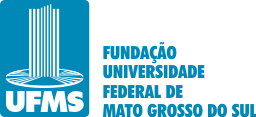Use este identificador para citar ou linkar para este item:
https://repositorio.ufms.br/handle/123456789/11763| Tipo: | Dissertação |
| Título: | Efeitos de dois Programas de Telerreabilitação sobre a capacidade funcional e qualidade de vida de pessoas com Osteoartrite de joelho: Um ensaio clínico randomizado único cego |
| Autor(es): | Fernando Dias Boeira |
| Primeiro orientador: | Glaucia Helena Goncalves |
| Resumo: | Introdução A osteoartrite (OA) é uma doença degenerativa, crônica, que causa dor, limitação e incapacidade funcional. Os sintomas geralmente são de início gradual e progressivo, exigindo tratamento contínuo e a longo prazo. O exercício físico é o tratamento não cirúrgico mais benéfico da OA de joelho. Entretanto, esses pacientes costumam diminuir o nível de atividade física ao longo do tempo, sendo um grande desafio para o tratamento. Uma alternativa para incentivar a manutenção do exercício físico é oferecer esta modalidade remotamente, com supervisão, utilizando tecnologia da telecomunição para reabilitação. Objetivo: Avaliar os efeitos de dois programas de telerreabilitação, nos formatos síncrono e assíncrono, sobre a capacidade funcional e qualidade de vida de pessoas com OA de joelho. Método: Este é um ensaio clínico randomizado, único cego, de análise quantitativa, com dois momentos de avaliação: pré e pós intervenção. Os participantes com OA de joelho foram randomizados em dois grupos: grupo síncrono (GS), que realizou o programa de exercícios por videochamada; e o grupo assíncrono (GA), que realizarou o mesmo programa de exercícios com o apoio de cartilha explicativa. O programa de exercícios foi realizado três vezes por semana durante seis semanas. Os participantes foram avaliados quanto ao desempenho funcional pelos testes: Caminhada Rápida de 40 metros (TC40m); Sentar e levantar de 30 segundos (TSL30s); e Subir e Descer Escadas (TEscada); e responderam sobre sua percepção de dor, função física, qualidade de vida e adesão por meio dos questionários: Western Ontario and McMaster Universities Osteoarthritis Index (WOMAC), World Health Organization Quality of Life - versão curta (WHOQOL-bref) e Exercise Adherence Rating Scale (EARS). Resultados: Foram avaliados 30 participantes, com idade média entre 41 e 76 anos (93,3% do sexo feminino), IMC de 30.6 kg/m2. Os grupos foram homogêneos quantos às características demográficas e clínicas. Com relação aos testes de desempenho físico, ambos os grupos apresentaram significativa diminuição de tempo na execução do T-C40m, No T-SL30, ambos os grupos apresentaram aumento significativo na quantidade de movimentos realizados e T-Escada, houve significativa diminuição de tempo de execução. WOQHOL-Bref não foram observadas interações significativas entre grupos ou momentos. WOMAC, nas dimensões ‘Dor’ e ‘Função’, apenas o grupo assíncrono apresentou diferenças significativas. WOMAC – Total, foi observada diferença significativa. No EARS, o GS apresentou média de 17,00 (6,5) e o GA, de 16,40(5,59) na seção B, e 27,90 (4,77) e 24,30(6,9), na seção C, indicando boa aceitação de ambos os programas. Conclusão: Nos resultados, observamos que ambos os programas são exequíveis e bem aceitos. Entretanto, não foi possível fazer conclusões consistentes a respeito da modalidade síncrona quanto a dor e função. |
| Abstract: | Background: Osteoarthritis (OA) is a degenerative and chronic disease that causes pain, limitation and functional disability. Symptoms are usually progressive, requiring ongoing, long-term treatment. Physical exercise is the first-line non-surgical treatment, however, people with knee OA tend to decrease the level of physical activity over time, which is a major challenge for the professionals who monitor them. An alternative for the maintenance of physical exercise, supervised and in the long term, is to offer it remotely, using technological resources of telecommunication for rehabilitation. Objectives: To evaluate the effects of two telerehabilitation programs to improve the health status of people with knee OA based on the analysis of quality of life, pain, functionality and adherence to exercises. Methods: This is a randomized, single- center, single-blind clinical trial with quantitative analysis, with pre- and post- intervention assessments. Participants were randomized into two groups: synchronous (GS), who performed the exercise program via video call through the WhatsApp messaging application; and the asynchronous (GA), who performed the same exercise program, but with the explanatory booklet support. The exercise program was based on muscle strengthening and endurance, performed 3 times a week in sessions 45 minutes for 6 weeks. All participants received and signed the Term of Free and Informed Consent (TCLE). The study was approved by the Ethics Committee for Research on Human Beings of the UFMS under number 5.833.392. Participants in both groups were monitored in a similar way and participated in face-to-face meetings for initial assessment (baseline) and after the 6 weeks of intervention, with physical performance assessment tests (40-meter Fast Walk Test (T-C40m) ; 30-second Sitting and Standing Test (T-SL30s) and 9-step Going Up and Down Stairs Test (T-Ladder) and completion of questionnaires (Western Ontario and McMaster Universities Osteoarthritis Index- WOMAC; the World Health Organization Quality of Life - WHOQOL-bref and the TAMPA Scale for Kinesiophobia - ETC), with the addition of the Exercise Adherence Rating Scale (EARS) in the reassessment. During the interventions, all participants filled out a booklet with their perceived exertion based on the Modified Borg Perceived Exertion Scale (BORG CR-10) and their pain with the Numerical Rating Scale (NCS) before starting the exercises. and immediately after completion. All participants received support material (illustrated booklet, a pair of 1 kg dumbbells and 1 elastic band – light resistance mini band) and were instructed to start level 1 exercises in the first week and progress to level 2 exercises and so on, according to your individual perception of tolerance. Results: 30 participants were evaluated, with an average age between 41 and 76 years (93.3% female), BMI of 30.6 kg/m2. The groups were homogeneous in terms of demographic and clinical characteristics. Regarding the physical performance tests, both groups showed a significant decrease in time to execute the T-C40m, In the T-SL30, both groups showed a significant increase in the number of movements performed and T-Ladder, there was a significant decrease in the time execution. WOQHOL-Bref no significant interactions were observed between groups or moments. WOMAC, in the dimensions ‘Pain’ and ‘Function’, only the asynchronous group showed significant differences. WOMAC – Overall, a significant difference was observed. In the EARS, the GS presented an average of 17.00 (6.5) and the GA, 16.40 (5.59) in section B, and 27.90 (4.77) and 24.30 (6.9), in section C, indicating good acceptance of both programs. Conclusion: In the results, we observed that both programs are feasible and well accepted. However, it was not possible to make consistent conclusions regarding the synchronous modality regarding pain and function. |
| Palavras-chave: | Fisioterapia Treinamento Físico Tele-Monitoramento Seguimento Remoto de Pacientes Reabilitação à Distância |
| País: | Brasil |
| Editor: | Fundação Universidade Federal de Mato Grosso do Sul |
| Sigla da Instituição: | UFMS |
| Tipo de acesso: | Acesso Aberto |
| URI: | https://repositorio.ufms.br/handle/123456789/11763 |
| Data do documento: | 2024 |
| Aparece nas coleções: | Programa de Pós-Graduação em Ciências do Movimento |
Arquivos associados a este item:
| Arquivo | Tamanho | Formato | |
|---|---|---|---|
| Trabalho Telerreabilitação Osteoartrite Pós Defesa Final.pdf | 5,68 MB | Adobe PDF | Visualizar/Abrir |
Os itens no repositório estão protegidos por copyright, com todos os direitos reservados, salvo quando é indicado o contrário.

